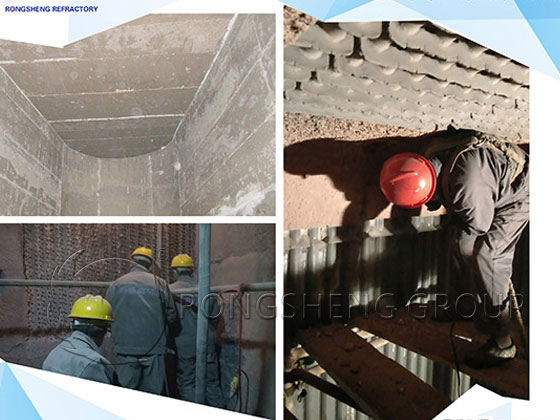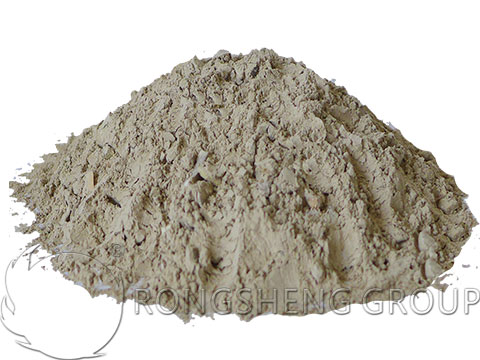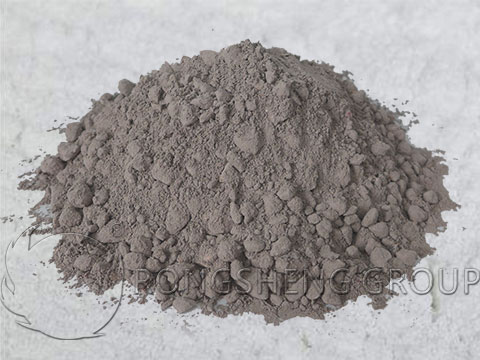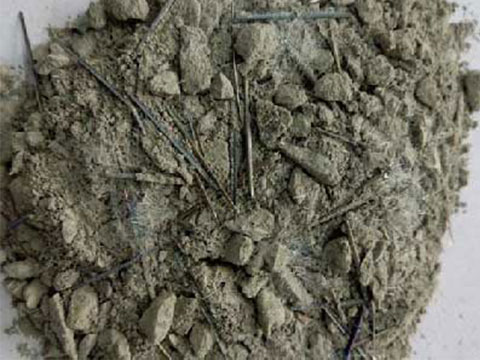Silicon carbide castable uses high-purity silicon carbide (SiC) raw material as the main component and adds a certain proportion of micro-powder additives. An unshaped refractory material produced with high-purity refractory cement as a binder. It has excellent properties of high-temperature resistance, wear resistance, erosion resistance, peeling resistance, erosion resistance, and crusting resistance. Amorphous refractory materials with silicon carbide as the main raw material also include silicon carbide spray coatings, silicon carbide plastics, etc., which can be poured, sprayed, and smeared.
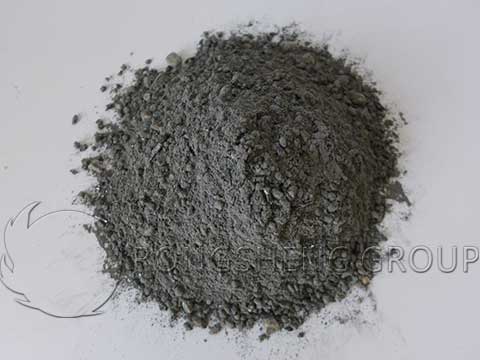
Advantages of Silicon Carbide Castables
- Anti-wear. Since the main component of the material is silicon carbide (SiC), it is also called emery. There are very few natural ones, and those used in industry are all synthetic raw materials. It has two crystal forms. The low-temperature form of β-SiC has a cubic structure; the high-temperature form of α-SiC has a hexagonal structure. Its true density is 3.21g/cm3, and its decomposition (sublimation) temperature is 2600°C. It is a hard material with a Mohs hardness of 9. Synthetic SiC powder is used as an abrasive. The grinding ability of silicon carbide is 0.25~0.28, which is higher than corundum.
- High-temperature resistance. Silicon carbide has good high-temperature resistance. Under normal pressure, the inconsistent melting temperature of silicon carbide is 2760°C, reaching 625MPa.
- Anti-erosion, anti-oxidation and anti-scaling. When heated to 1000°C, the surface of SiC is oxidized and a layer of SiO2 protective film is formed. This film hinders the diffusion of oxygen and slows down the oxidation rate. The silicon carbide covered by the film is protected and the service life of the silicon carbide material is improved.
At 1300°C, cristobalite begins to precipitate in the film. The crystal form transformation of cristobalite causes cracking of the film and accelerates the oxidation rate.
At 1500~1600℃, the oxidation rate accelerates, but the SiO2 layer produced is also thick, and silicon carbide can still work for a long time. When the temperature rises to 1627°C, the SiO2 layer is destroyed and the silicon carbide oxidation reaction intensifies. Therefore, 1627°C is the highest temperature at which silicon carbide can work in an oxidant-containing atmosphere.
The chemical properties of silicon carbide are relatively stable and have good acid resistance. Silicon carbide does not react with boiling hydrochloric acid, sulfuric acid, or nitric acid. When the temperature is ≤1300℃, it will not be corroded by H2, N2, and COR2O, and it will be corroded by oxides above 1000℃. At high temperatures, silicon carbide is corroded by Cl2, F2, and H2, and can also react with H2O. When the temperature is ≥1370°C, silicon carbide and Cr2O3 react to form metal silicide.
Silicon carbide is not suitable for cutting steel. When the temperature rises, SiC will react with Fe to form ferrosilicon alloy and iron carbide. But silicon carbide can be used to grind cast iron. This is because cast iron has a high carbon and silicon content and is not sensitive to the reaction of silicon carbide.
- Thermal shock resistance. When the silicon carbide powder is 150 mesh, SiC is not completely oxidized. Creating gaps or partial gaps around the SiC particles improves the thermal shock resistance and strength of the castable. The SiC that has not been completely oxidized also plays the role of particle reinforcement.
- High conductivity. Silicon carbide has strong electrical conductivity and is a semiconductor. When the temperature reaches 2000°C, the electrical conductivity of silicon carbide is equivalent to that of graphite.
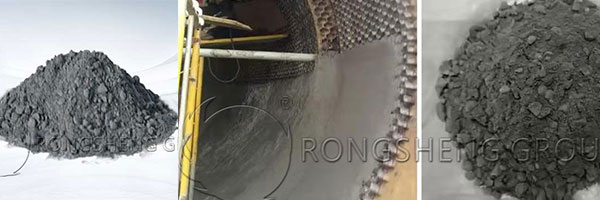
Application of Silicon Carbide Castables
- Molten iron preconditioner linings, cupola furnaces, and induction furnace linings in the steel industry.
- Combustion chamber side wall linings and boiler tube protective linings for waste incinerators in the solid waste treatment industry.
- In the cement industry, the cement kiln preheater lining, rotary kiln head, and grate cooler wear piers.
- The cyclone separator lining the body of thermal power plants in the electric power industry, the combustion chamber, lining, and high-temperature separator return part of the circulating fluidized bed furnace.
- Firing kiln shed panels for the ceramics industry.
- Reduction of furnace linings such as silicon outlets and aluminum outlets in the non-ferrous metal smelting industry.
- Biomass pellet stove burners and other easy-to-wear parts in the energy industry.
Introduction to Silicon Carbide Castable Mix Ratio and Performance
There are very few natural silicon carbides, and most of them used in industry are synthetic raw materials, commonly known as emery. Silicon carbide is one of the non-oxide refractory raw materials commonly used in the field of refractory materials. Clay-bonded silicon carbide castables, oxide-bonded silicon carbide, nitride-bonded silicon carbide, recrystallized silicon carbide, reaction sintering siliconized silicon carbide and other products produced from silicon carbide as raw materials, as well as amorphous refractory materials. It is widely used in blast furnaces, zinc smelting furnaces, ceramic industry kiln furniture, etc. in the metallurgical industry.
Silicon carbide castable has the characteristics of high strength, good wear resistance, and strong slag resistance. The operating temperature is 1500-1700°C. It is generally used in parts that are prone to wear such as cyclone furnaces, boiling furnaces, and boilers, and can meet the technical requirements of thermal equipment. Mix ratio and properties of silicon carbide castables. The density of the aluminum phosphate solution is 1.5g/cm³. The sample without coagulant is dried at 110°C. Aluminum powder with a fineness of 0.09mm is greater than 85%. For castables with added alum powder, the high-temperature compressive strength at 1200°C is 22.5MPa, the load softening temperature at 4% deformation is above 1710°C, and its starting point temperature is 1680°C.
When the kiln lining is thicker, the particle size of the refractory aggregate should be increased to 5mm or larger to reduce the specific surface area of the refractory raw materials. Reduce the amount of aluminum phosphate solution and improve the performance of silicon carbide castables. As we all know, silicon carbide castables will begin to oxidize in an oxidizing atmosphere at about 1000°C. Significant oxidation occurs at 1350°C, and a SiO2 protective layer is formed at the same time, which can prevent SiC from continuing to oxidize. Therefore, aluminum phosphate silicon carbide castable is used in an oxidizing atmosphere, and its long-term use temperature is about 1500°C.
It should be pointed out that as a binder for silicon carbide castables, aluminum phosphate is more commonly used. There are also magnesium phosphate, sodium phosphate, zinc phosphate, boron phosphate, calcium phosphate ammonium phosphate, etc., which can also be used as binding agents but are rarely used in actual projects. Aluminum phosphate binder can be used with any silicon carbide castable. The prepared silicon carbide castable has better performance and achieves better use results. However, the reaction between silicon carbide castables and magnesia materials is severe. When using aluminum phosphate solution as a binding agent, inhibitors or retarders should be added, or solid aluminum phosphate-containing inhibitors should be used as a binding agent, both of which can achieve good construction and use effects.
Rongsheng Kiln Refractory Material Manufacturer
Of course, except for silicon carbide castables whose main component is silicon carbide. There are also silicon carbide added to high aluminum and corundum amorphous refractory materials. SiC can be used as the main component to make SiC castables, or it can be used as an additive component to improve the properties of other castables, especially slag resistance and thermal shock stability. In 1999, Wang Xitang et al. researched and developed the Al2O3-SiC-C blast furnace tap trough self-flowing castable. The castable has high strength, good corrosion resistance, high iron flow, and good thermal shock resistance and oxidation resistance. The most common application of SiC in monolithic refractory materials is for the working lining of blast furnace tap trenches. It has a history of more than 20 years and has good results. At present, Al2O3-SiC-C castables are commonly used in larger blast furnaces at home and abroad, which greatly extends the service life of the iron trench.
